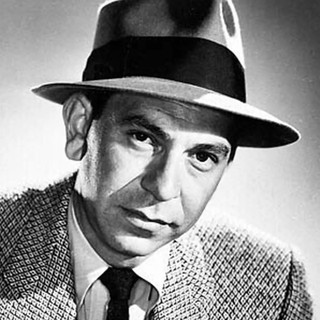Credit the Los Angeles Times for steadfastness. As the paper hemorrhages money, as the staff continues to shrink, as all available evidence suggests their business model is a failure, those who remain with the failing enterprise continue to advance the same leftist tropes. It's like watching a church choir that feels it must sing all the louder as its members fall away and the pews before it grow more empty with each passing Sunday.
I grew up reading the LA Times in my parents' home, then started my own subscription while attending college. I have witnessed the paper's transformation from a reliably conservative outlet to a reliably liberal one, but even as that evolution occurred, one could still find a semblance of objectivity and journalistic talent on its pages. The lurch to the left continued, however, and now the LA Times has metamorphosed into some hideous amalgam of the Daily Worker, the Advocate, and the bulletin board in some Williams College freshman dorm. Nowhere has the paper's leftward drift been more evident than in its coverage of crime and law enforcement.
The latest example is a March 7 editorial that lamented the 30th anniversary of California's "three strikes" law, which mandated lengthy prison sentences for repeat felons. In their lamentation, the editors cite the woeful tale of Jerry Dewayne Williams, who in 1995 received a sentence of 25 years to life for having committed what they would have their readers believe was the mere theft of a slice of pizza.
Though initially charged with robbery, Williams was convicted of the lesser felony of "petty theft with a prior." Nevertheless, his rap sheet was of sufficient opulence to trigger the three strikes law. In writing about Williams in 2010, by which time he had petitioned for and won his release from prison, the Times called him the "pizza thief," as though his crime, like Jean Valjean's in "Les Miserables," had been motivated by hunger. Though elided completely in the recent editorial — and nearly completely in the 2010 story — the circumstances of the pizza theft were more sinister than the Times would have its readers believe.
Williams and some companions were on the Redondo Beach pier one evening in 1994 when they came across four children, ages 7 to 15, sharing a pizza. Williams walked up and hovered menacingly over the children, picked up a slice of pizza, and began eating it as though daring them to try to stop him. Fearful of being assaulted by Williams and his friends, they did nothing. But they did report the incident to their parents, who called the police, who in turn found Williams nearby and arrested him.
Though the jury deadlocked on the robbery charge, Williams's conduct clearly met the elements of California Penal Code section 211, which defines robbery as the "felonious taking of personal property in the possession of another, from his person or immediate presence, and against his will, accomplished by means of force or fear." Williams didn't take the pizza merely to satisfy a craving; he did it for the thrill he received from intimidating four children. He told police that after taking one bite from the slice he threw the rest in the ocean. Note that in the law cited above, no minimum value of the stolen property is established; it is the conduct that is punished regardless of how trivial the loss. (I once arrested a man and saw him sentenced to prison for robbing one of his neighbors of 75 cents.)
Related: Grandstanding Los Angeles City Controller Issues Flawed LAPD Air Support Audit
But the minimization of Williams's misdeed is far from the most glaring defect in the editorial. It notes correctly that by the time California's three strikes law was passed in 1994, the crime wave that inspired it had already crested, but it goes on to say that crime saw a historic plunge, though without attributing any of that plunge to the law the Times today condemns. "A host of tough-on-crime measures followed from both Republicans and Democrats," said the editors, "even as crime continued its free fall."
Thus do the Times editors exhibit their willful blindness to the simple fact that locking up more criminals caused the decline in crime, first by deterring lawbreakers but more importantly by incarcerating them. As Rafael Mangual notes in his book "Criminal (In)Justice: What the Push for Decarceration and Depolicing Gets Wrong and Who It Hurst Most", prisons "spare the general public from the crimes those incarcerated would have otherwise committed if they were out on the street."
But to the editors at the LA Times, crime was in "free fall," as though affected by nothing other than some mysterious elemental force akin to gravity, a force that causes crime to rise or fall regardless of what methods are employed to combat it.
But again, credit the LA Times for consistency in their error on law enforcement matters. They endorsed George Gascón in his recent primary campaign to remain as Los Angeles County district attorney, and no doubt will do so again as he faces former federal prosecutor Nathan Hochman in November's general election. In their endorsement, the editors wrote that the number of felony cases his office has filed "is on par with that of earlier administrations." This may be true, as far as it goes, but the number of filings is not the only or most reliable indicator of his office's commitment to public safety. "The argument that Gascón is lax or lenient on crime," say the Times editors, "simply does not hold up to the facts."
Is that so? Then why, we may ask, is it still Gascón's policy not to seek increased felony sentences under circumstances in which California law explicitly calls for them?
Here are some facts the LA Times editors may have overlooked: In the city of Los Angeles, year to date, homicides are up by 16%, robberies by 14%, and burglaries by 4%. In 77th Street Division, one of the city's 21 patrol stations, homicides are up by 167% and burglaries are up by 56%.
The question is a simple one: Where would we prefer criminals to live, in our neighborhoods or in prison?










Join the conversation as a VIP Member